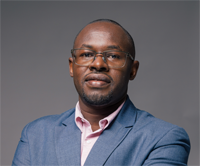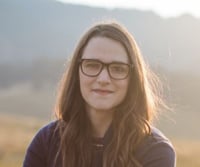In sub-Saharan Africa today, 55% of the current population has no access to electricity. Those that do experience frequent outages and cannot depend on it for their basic needs. Despite growth in power distribution across the world, it is estimated that 650 million people worldwide will still be without access to electricity 10 years from now.
The Rockefeller Foundation is committed to changing that. They aim to leverage distributed renewable energy (DRE) by investing in affordable, reliable, clean energy solutions that will be safe for the environment while providing electricity to the world’s most vulnerable communities.
As Rockefeller works to develop the “low-carbon energy system of the future,” they’ve enlisted Reos Partners to help implement the project known as DART, Demand Aggregation for Renewable Technologies. As a member of the Reos project team Nwanyibuife Ugwoeje explains, “DART is an initiative that streamlines the purchasing of the energy equipment by developers so that they can provide electricity both at a reduced rate and within a shorter time frame.”
Reos is also playing a role in codifying and scaling the work of DART so that it can have impact across the region. “There are a lot of moving pieces and many details to be clarified. Our aim is to help develop the model that DART can use as it expands into new countries.”
Here, two stakeholders involved in the DART project, Victor Okinda of The Rockefeller Foundation and Emily McAteer of Odyssey Energy Solutions, share details on the pilot project, the crucial collaboration Reos Partners has provided, and their hope for the future of clean energy in Sub-Saharan Africa and beyond.
 Victor Okinda is a Senior Associate of the Power & Climate Initiative at The Rockefeller Foundation. A renewable energy professional with nine years’ experience working in the sub-Saharan Africa energy space, Victor has developed over 50 MW of wind, solar and small hydros to power development in the continent. Together with a talented team of professionals at the Rockefeller Foundation, he is now working to end energy poverty by dramatically expanding access to clean, reliable energy to power enterprise-driven development. His focus is on reducing the cost of distributed renewables, thereby increasing energy access to poor and vulnerable underserved communities.
Victor Okinda is a Senior Associate of the Power & Climate Initiative at The Rockefeller Foundation. A renewable energy professional with nine years’ experience working in the sub-Saharan Africa energy space, Victor has developed over 50 MW of wind, solar and small hydros to power development in the continent. Together with a talented team of professionals at the Rockefeller Foundation, he is now working to end energy poverty by dramatically expanding access to clean, reliable energy to power enterprise-driven development. His focus is on reducing the cost of distributed renewables, thereby increasing energy access to poor and vulnerable underserved communities.

Emily McAteer is the Co-founder and CEO of Odyssey Energy Solutions in Boulder, Colorado. Odyssey is an investment and asset management technology platform for the distributed energy sector. Previously Emily was Chief Revenue Officer of Frontier Power, a SunEdison subsidiary developing solar microgrids in India and Africa. Emily also worked in advanced energy management at EnerNOC and Yahoo, developed climate investment solutions at RiskMetrics Group, and received a Fulbright Fellowship to address off-grid solar lighting solutions in rural India.
How will the DART project help accelerate clean energy solutions to communities in need?
VO: DART is an attempt to reduce the upfront cost of hardware in distributed renewable energy (DRE) projects through aggregation. DRE in this context includes things like mini grids, solar powered irrigation projects, and other solutions that can provide energy to remote communities. The goal is to achieve about a 30% upfront cost reduction. Most of the DRE projects today are still relatively small and bespoke. There’s no standardization in parts procured and the developers and contractors behind these projects end up purchasing the hardware they need at expensive subscale prices.
What we're trying to do with this program is to create a platform that brings all these players together so they can aggregate their purchases to a few high-quality suppliers, enabling them to get cheaper prices, higher quality, and improved commercial terms. In addition, aggregating also allows us to bundle on things like financing and logistics. These will further improve the efficiency and efficacy of the program.
Based on our current pilot project in Nigeria, we are hoping to see about a 50% cost of service reduction. This will translate to 75,000 new connections and about 370,000 people impacted.
What is Odyssey Energy and how are they involved in the DART project?
EM: Odyssey is a global technology platform for financing distributed energy projects. We had been circling the idea of extending our platform to this aggregated procurement initiative and timing aligned well with the Rockefeller Foundation’s plans to launch DART. We have more than a thousand companies on our platform accessing finance for their projects. It was a natural extension to offer them other services to streamline their project development as well, such as a procurement process where they could access lower prices for project equipment through aggregated orders. We've been scoping with Reos Partners and Rockefeller Foundation on how to effectively play that role and launch this new offering.
Do the communities you are working with in the pilot now have any source of electricity?
VO: In most cases, no. We call them “energy poor,” meaning they either have no connection at all or they have an extremely unreliable connection. Some have resorted to using diesel generators. We want to hook them up with clean, affordable, and reliable electricity.
EM: There are almost a billion people around the world that don't have access to reliable electricity. Distributed renewables is the way that we're going to electrify these communities. We need that sector to scale and we need companies able to deploy many projects quickly. To do that we have to bring down the capital cost of these projects—to make the cost of electricity cheaper, and to make the cost of deploying these projects cheaper and faster.
Why was Nigeria selected for the pilot project? What countries are intended to be impacted by DART?
VO: We've started with Nigeria for a lot of good reasons. There's a huge energy deficit in Nigeria and the conditions are just ripe for intervention. There's also an active private sector developer network that is participating in other mini grid programs such as the Nigeria Electrification Project by the Government of Nigeria and the World Bank. These reasons make it an obvious first place to test the pilot.
Aside from Nigeria, we of course want to extend this to other geographies. Next up is Ethiopia. After that we have a few other priority countries lined up within sub-Saharan Africa.
Why did the Rockefeller Foundation approach Reos Partners to be involved in this project? How have they helped move the project forward?
VO: Reos has a lot of experience and expertise in gathering people together, collecting everyone’s point of view and needs in designing complex programs. They've been working to condense the perspectives from the various team members and DART stakeholders to build a deployment model for this project.
EM: Every time we're launching in a new country we have a series of workshops that Reos organizes with stakeholders and project developers who were our target users of the DART initiative. Reos has been running a process with Rockefeller Foundation to scope the work plan and the approach to DART more generally and then specifically in each new country. The purpose of the workshops has been to understand what the project developers’ pain points are, especially around procurement. We also wanted to narrow in on what equipment we'd want to procure and what suppliers we should work with.
It's an interesting project for Reos to navigate because we're already on the ground implementing it while they're defining it. They're doing a great job of bringing those two processes together. As we’ve launched the pilot in Nigeria, they've done a good job jumping in and helping us synthesize learnings from that pilot even while they're still in the earlier phases with Rockefeller trying to design the bigger program. Similarly, they've helped define what Odyssey’s role is. It's been really interesting to have someone provide structure on top of what's actually getting implemented on the ground. It's helped us to think about how to roll out to new countries through that framework.
What is the end goal for this project? What impact will this project have on the people who are living in other areas without electricity across the world?
EM: If the pilot is successful, we should see more projects get off the ground at a faster clip in each of these countries that we're working in. The way that we're going to do that is by bringing down the capital cost of the projects through better pricing by giving the developers access to finance that they need so that they can get projects started without having to address working capital issues. The third way is streamlining the logistics process so that each individual developer isn’t trying to arrange it themselves.
VO: The biggest benefit is reducing cost. When you reduce the cost of building a mini grid then more of them can be built. When more of them are built more people can be connected to affordable and reliable electricity and positively impacted. If it costs less to build, the energy produced as a result will cost less which means it's going to be more affordable electricity. The benefits are insanely huge. For example, children will be able to read at night. The people will have refrigeration to store vaccines, medicine, and food. Businesses can operate longer and more profitably. The impact of bringing electricity to these communities is incredible.